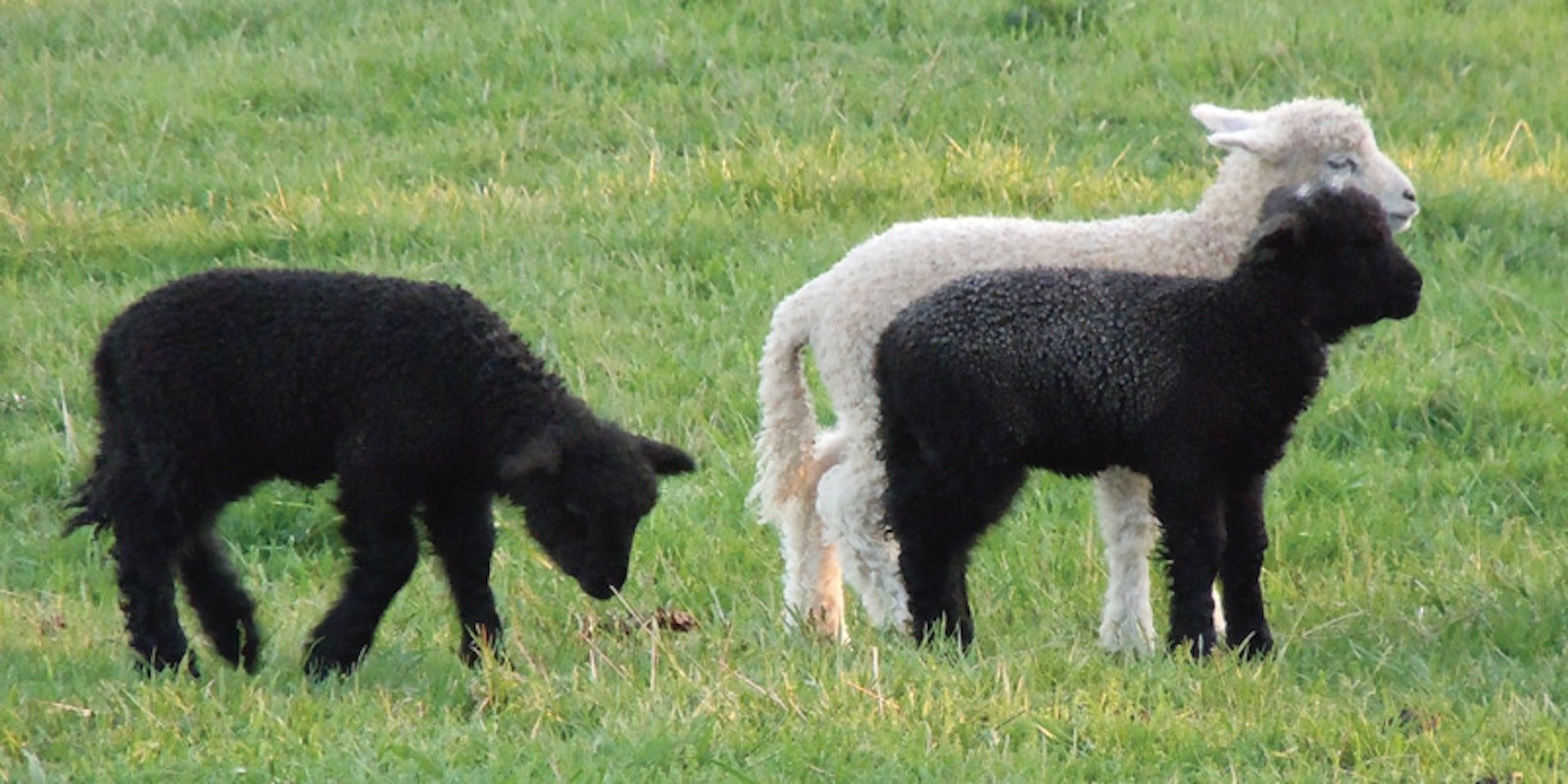Most people today are familiar with only the two types of wool best suited for industrial processing. One type consists of wools obtained from a variety of breeds of sheep that are blended to produce multipurpose knitting yarns such as the North American four-ply knitting worsted. The other is merino, obtained from a single breed consisting of several strains whose fine wool ranges from medium-soft to exceptionally soft. The wool of both types is virtually all white as factories can dye white wool to any color that a designer can dream up.
Leicester Longwool ewe, showing her silky fleece, at Row House Farm in Virginia’s Shenandoah Valley. Photograph courtesy of Row House Farm and by Melanie Rowan.
Missing from this picture are hundreds of breeds of sheep with fleeces that run the gamut of texture, fineness or strength, and color. These sheep evolved over thousands of years through interactions among the animals and their environments as well as through breeding decisions made by humans. Their wool, though it may be perfectly suitable for hand processing, doesn’t fit the industrial model. And therein lies the problem: If the breeders and shepherds of these colorful, distinctive animals can’t make a living by keeping them, then the animals may well become extinct.
Why does that matter?
If you have known only industrially processed wools and merino, it’s as if you have tasted only vanilla and chocolate ice cream and have never had a chance to try strawberry, rum custard, peppermint, or pistachio, or to learn perhaps that chocolate chip is your favorite flavor. The good news is that some individuals in the past, nearly or completely singlehandedly, have saved a number of endangered breeds from extinction and that today’s fiber folk have enough clout to make a huge difference for the future. But each of us needs to do our part, too.
It’s easy and fun. Just reach out, find, and play with a new-to-you skein of yarn from a new-to-you breed. I guarantee that doing so will open your eyes to possibilities that you may not have imagined.
Rare, Valuable Sheep and Their Wool
Allow me to introduce four rare breeds of sheep and their delightful wools. (Selecting which breeds to feature has been an interesting project in itself. I worked from the lists prepared by the American Livestock Breeds Conservancy [for North America] and by the Rare Breeds Survival Trust [for the British Isles]. Some breeds appear on one of these lists and some on both.) For each breed, both spun yarns and fleeces are available, at the very least through Internet sources. As for other breeds, all sorts of woolly variety can be located by searching on Google, looking at Local Harvest offerings, and/or checking breeders’ associations and contacting their members.
American Tunis ewe with cream-colored fleece. Photograph courtesy of the National Tunis Sheep Registry and by Debbi Brown.
I chose breeds that differ dramatically from one another to give you an idea of the diversity of sheep. I also wanted to show how hard some breeds’ stories are to trace, how a single moment in history nearly eradicated some, and how frequently the actions of a single person or a handful of people secured a breed’s survival, at least for the time being. What happens in the future is up to us.
Two of the breeds I chose have British roots: the Manx Loaghtan from the Northern European Short-Tailed group and the Leicester Longwool, an English Longwool that traces its ancestry to Roman Britain. Two are American originals: the Navajo-Churro, a small and hardy breed that was almost extinguished more than once through social engineering and “improvement” efforts, and the American Tunis, a breed that is as old as the United States but barely survived the Civil War (1861–1865).
The wool of each of these breeds differs from the two types most commonly available. Each warrants your attention, and each may earn your admiration and even love as they have mine.
For the complete article, please see PieceWork November/December 2011.
Featured Image: Leicester Longwool lambs, less than two weeks old, at Row House Farm in Virginia’s Shenandoah Valley. Photograph courtesy of Row House Farm and by Melanie Rowan.



